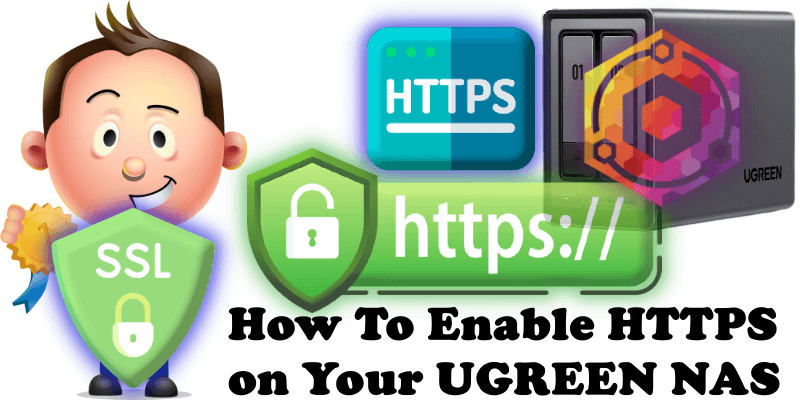
I have come to realize that a lot of new UGREEN NAS users don’t know how to activate the HTTPS protocol. Are you tired of seeing your connection to your UGREEN NAS in the Chrome, Firefox, Safari etc. address bar is not secure? In this step by step guide I will try to easily explain to you how to enable HTTPS on your UGREEN NAS so that, instead of connecting through your UGREEN NAS LAN local IP, you will connect to the HTTPS address you choose. The first advantage of this method is that you can connect to your NAS from your office or from a different location and not just from your local network.
STEP 1
Please Support My work by Making a Donation.
STEP 2
Launch your browser, then go to the official NoIP website by clicking on the blue link below. 📋Note: No-IP provides a free service that allows users with dynamic IP addresses (common in residential internet connections) to have a static hostname that maps to their changing IP. This is particularly useful for accessing home servers, NAS, webcams, DVRs, or any internet-connected device remotely without needing a static IP address from your ISP.
Register your noip account. Follow the instructions in the image below.
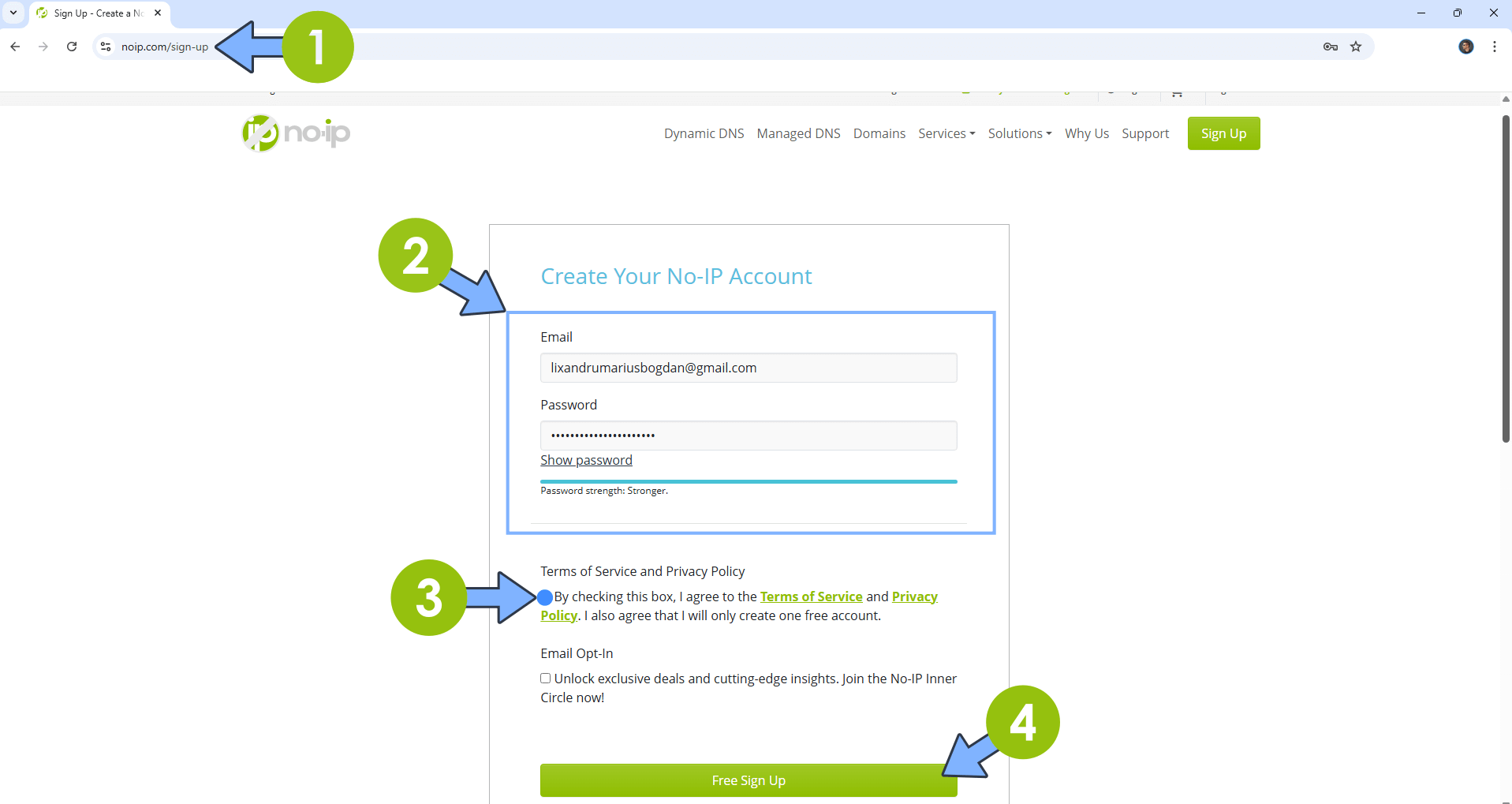
STEP 3
Once you have registered your noip account, create your first hostname. For example, I have created mariushosting as Host and I use the free ddns.net domain. In the IPv4 Address area, type in your own IPV4 IP address from your ISP, then click Create. Follow the instructions in the image below.
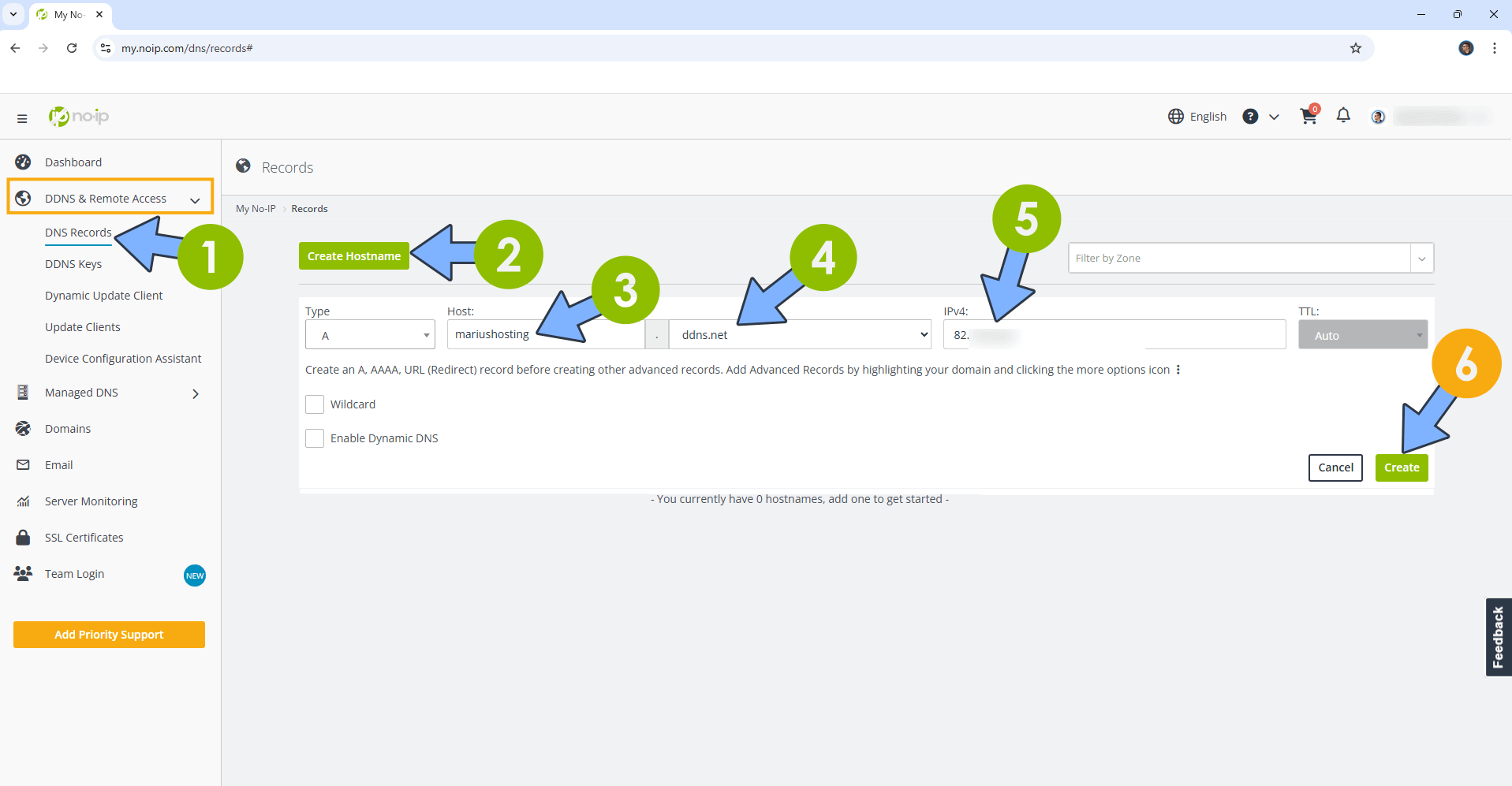
STEP 4
Log into your UGREEN NAS device. Go to Control Panel / Device Connection / Remote access tab / Check Enable DDNS support, then click + Add. Follow the instructions in the image below.
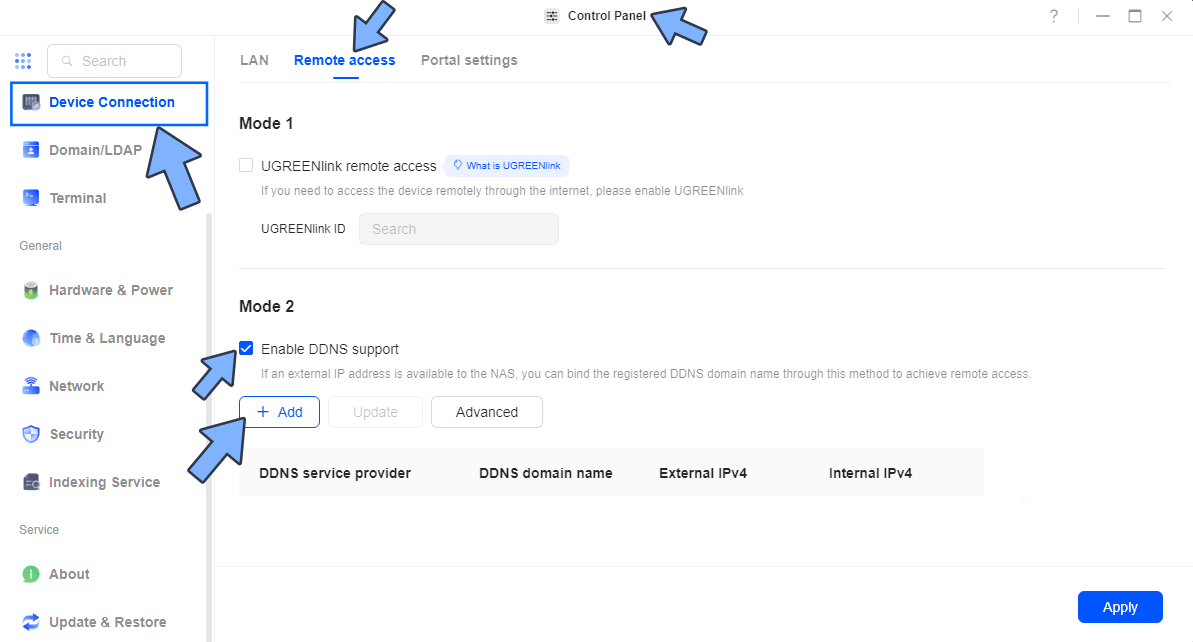
STEP 5
In the DDNS area, type in the following data. Follow the instructions in the image below.
DDNS service provider: noip.com
Registered DDNS domain name: The hostname followed by the domain name, that you previously created at STEP 3.
AccessKey ID: Your own email address that you previously used to register your noip account.
AccessKey: Your own password that you previously used to register your noip account.
IPv4: Auto.
Click Apply.
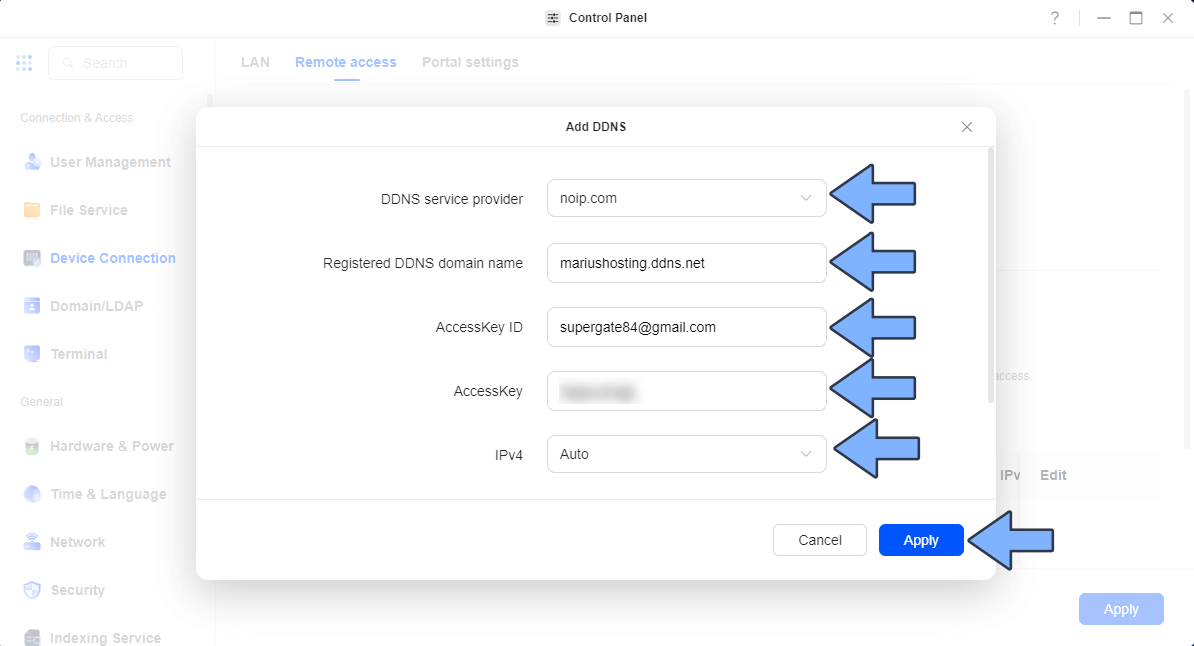
STEP 6
Go to Control Panel / Device Connection / Portal settings tab/ In the Web port (HTTP) area, type in 9999. Click Apply. 📋Note: I use port 9999 as an example; you can change this port later after you better understand the function.
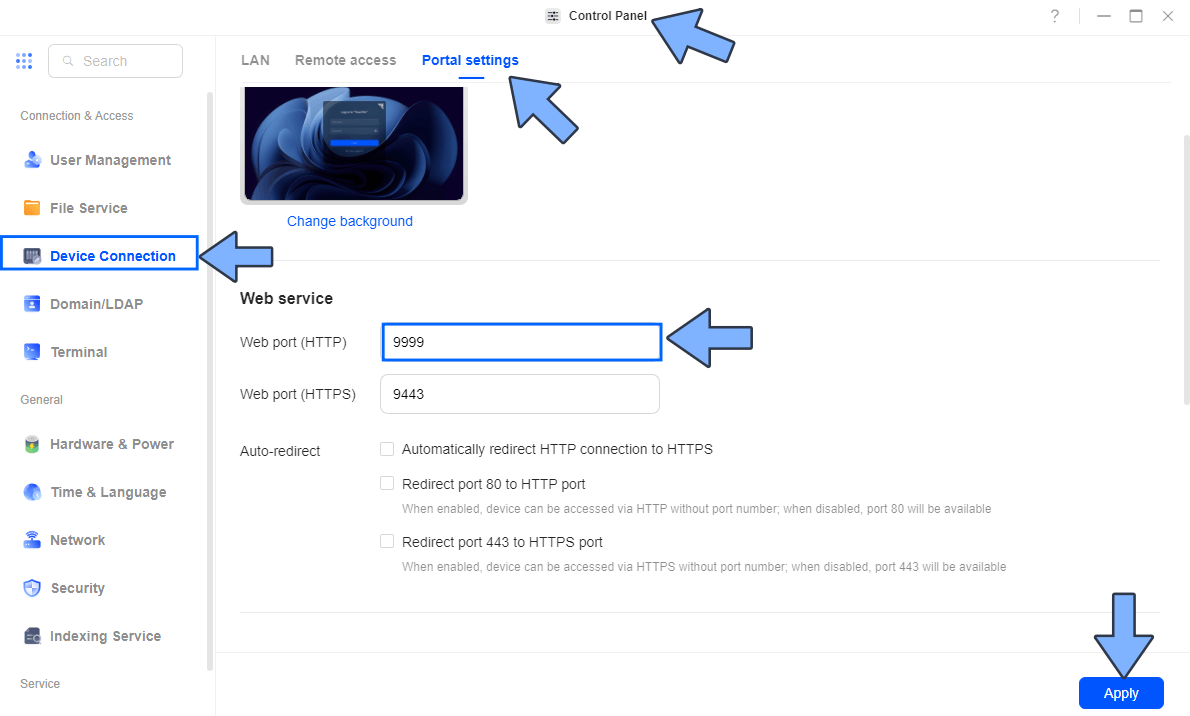
STEP 7
Go to Control Panel / Device Connection / Portal settings tab/ In the Advanced area, Check the following options:
Enable HTTP/2
Enable HTTP compression
Enable reuseport
Click Apply. Follow the instructions in the image below.
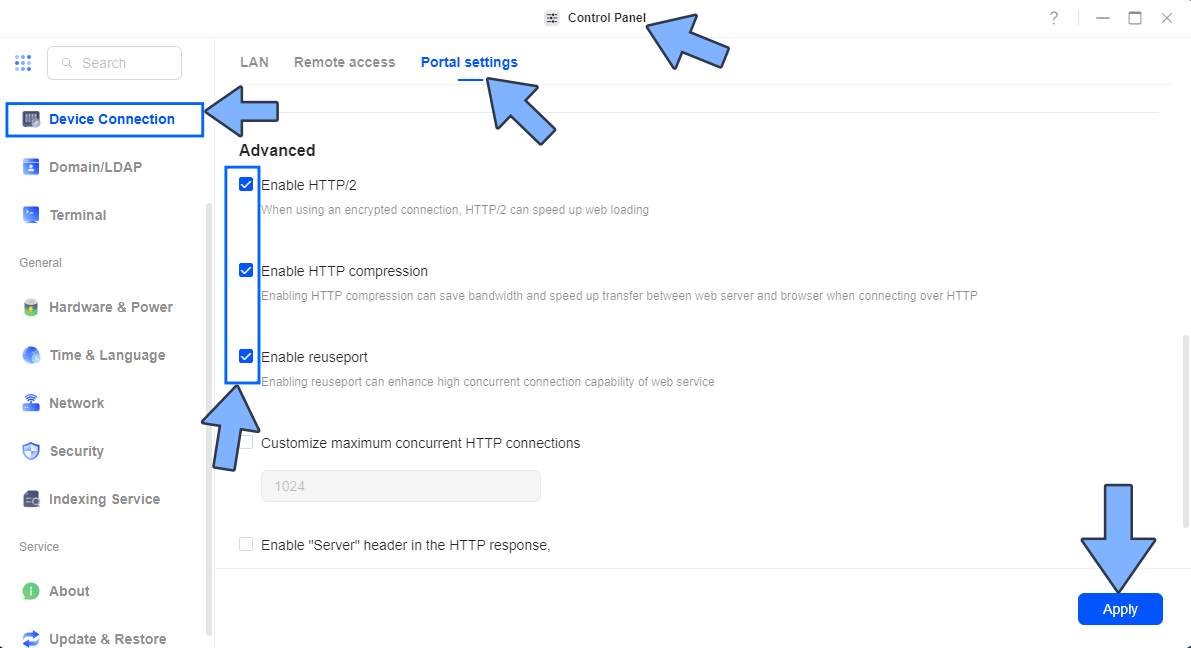
STEP 8
Be sure to open the necessary ports through your router settings, both TCP/UDP. Most people forget to port forward their ports in their router settings. If the ports that point to your UGREEN NAS device are not opened, all the services you have activated on those specific ports will not work. This is a step overlooked by many but essential for the perfect functioning of HTTPS. All you need to do is give your UGREEN NAS device permissions on ports 80 and 443 both TCP and UDP. Follow the instructions in the image below and remember that each router has a different design than the one presented in this image below. Currently I’m using a Synology RT6600ax router. Note: Ports 80 and 443 are mandatory to validate the Let’s Encrypt SSL certificate.
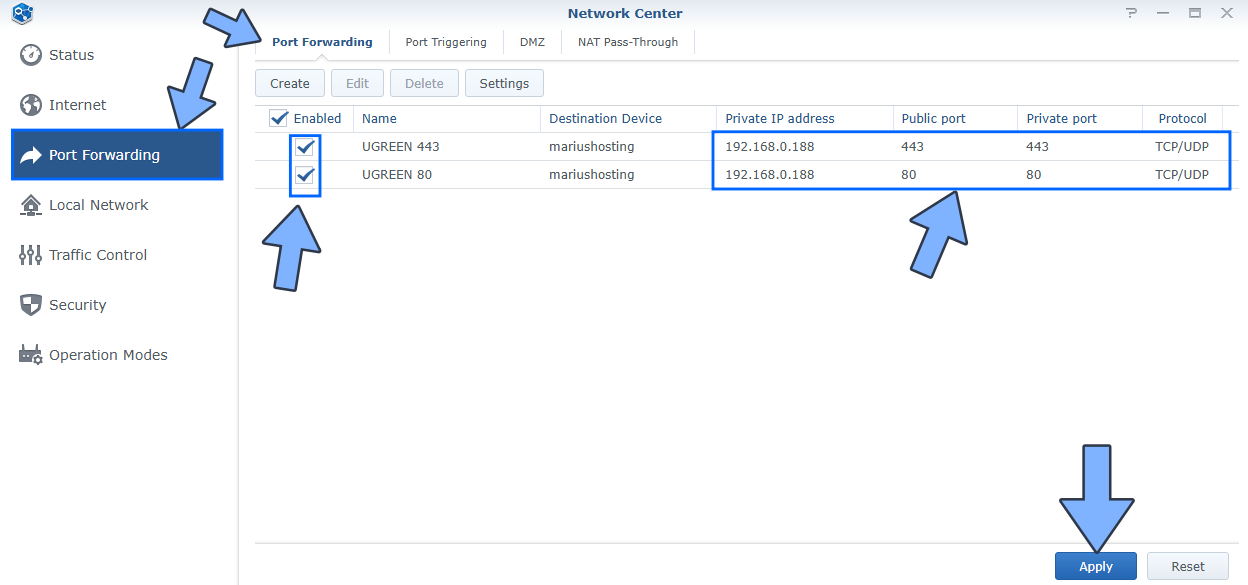
STEP 9
Install Nginx Proxy Manager using my step by step guide. If you already have Nginx Proxy Manager installed on your UGREEN NAS, skip this STEP. ⚠️Attention: Mandatory STEP.
STEP 10
Access your Nginx Proxy Manager that you have previously installed at STEP 9. Click Proxy Hosts. Follow the instructions in the image below.
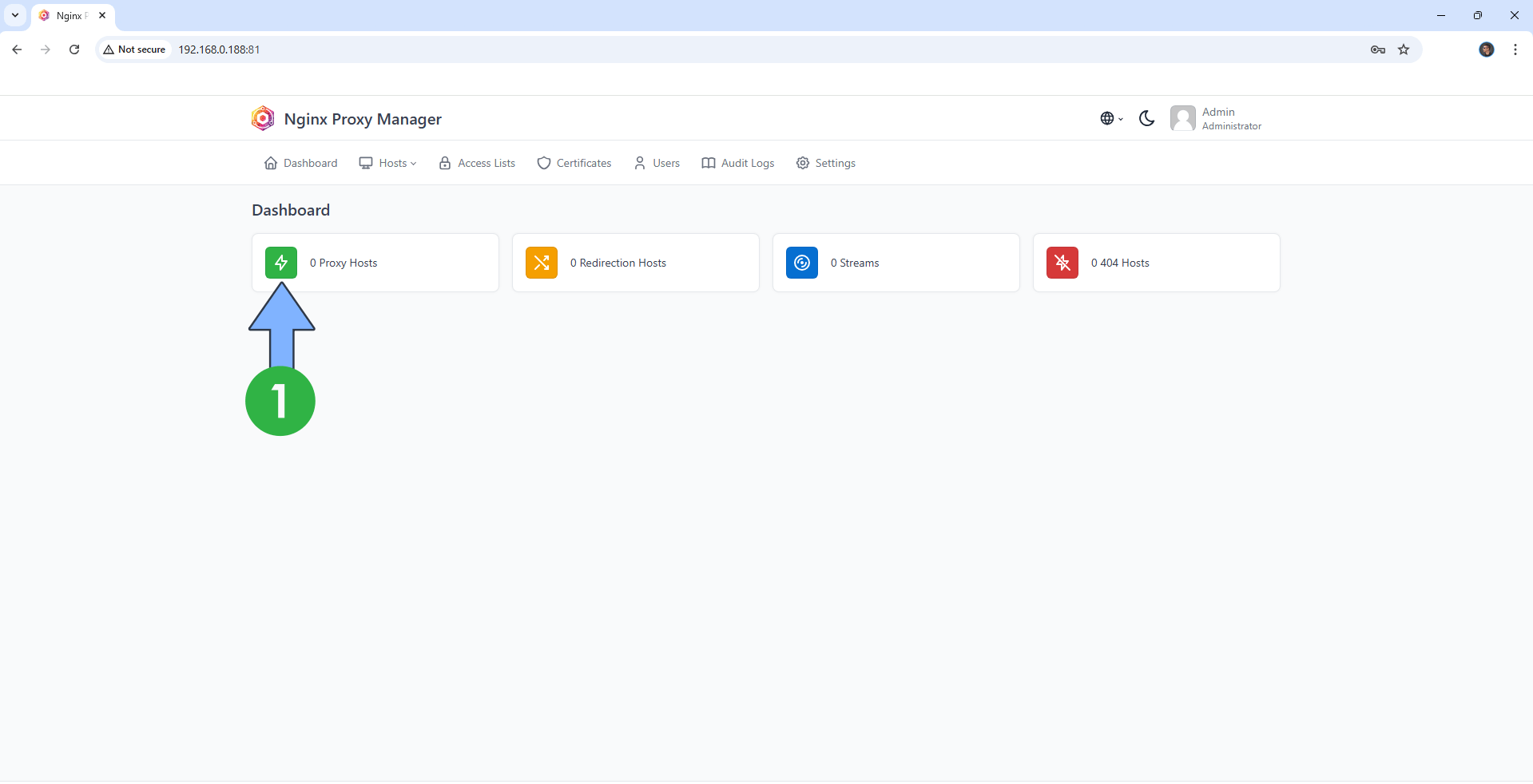
STEP 11
Click Add Proxy Host. Follow the instructions in the image below.
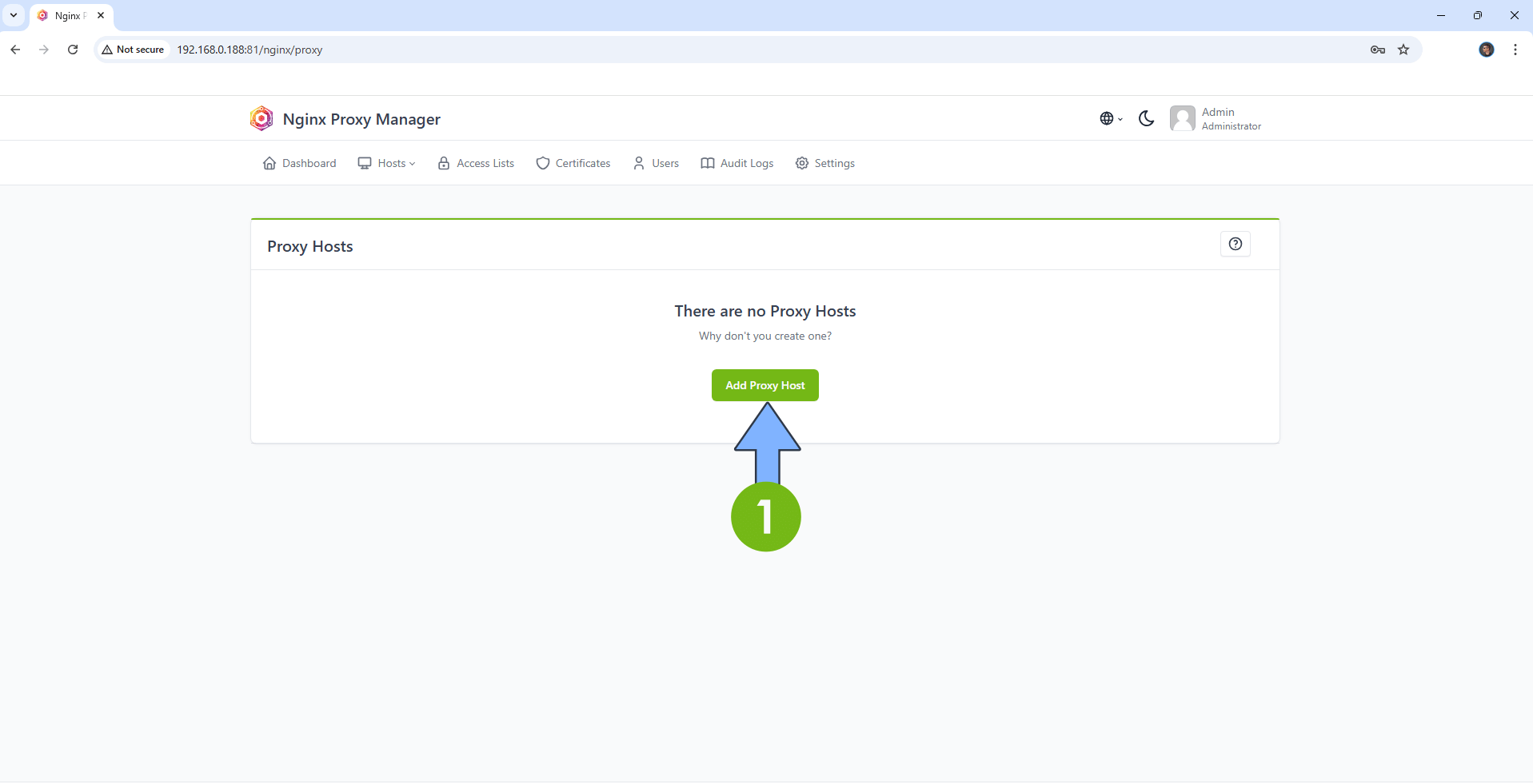
STEP 12
A new pop up window will open. Add the following details:
Domain Names: Type in your own noip domain name that you have previously created at STEP 3.
Scheme: http
Forward Hostname/IP: Type in the local NAS IP of your UGREEN NAS.
Forward Port: Type in the Web (HTTP) port that you have previously added at STEP 6.
Check Block Common Exploits
Check Websockets Support
Click the SSL tab. Follow the instructions in the image below.
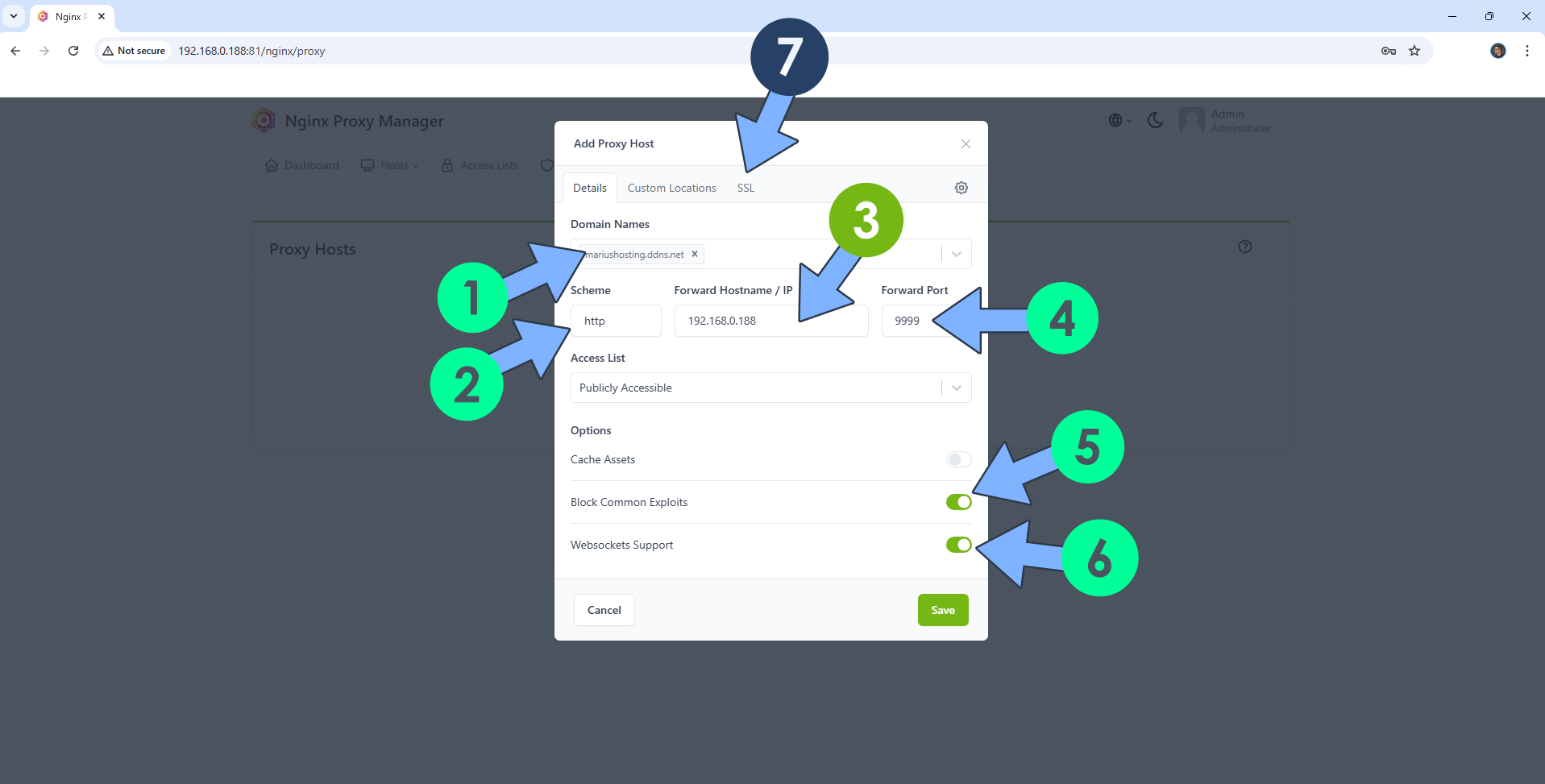
STEP 13
After you click the SSL tab, add the following details:
SSL Certificate: Request a new SSL Certificate
Check: Force SSL
Check: HSTS Enabled
Check: HTTP/2 Support
Click Save. Follow the instructions in the image below.
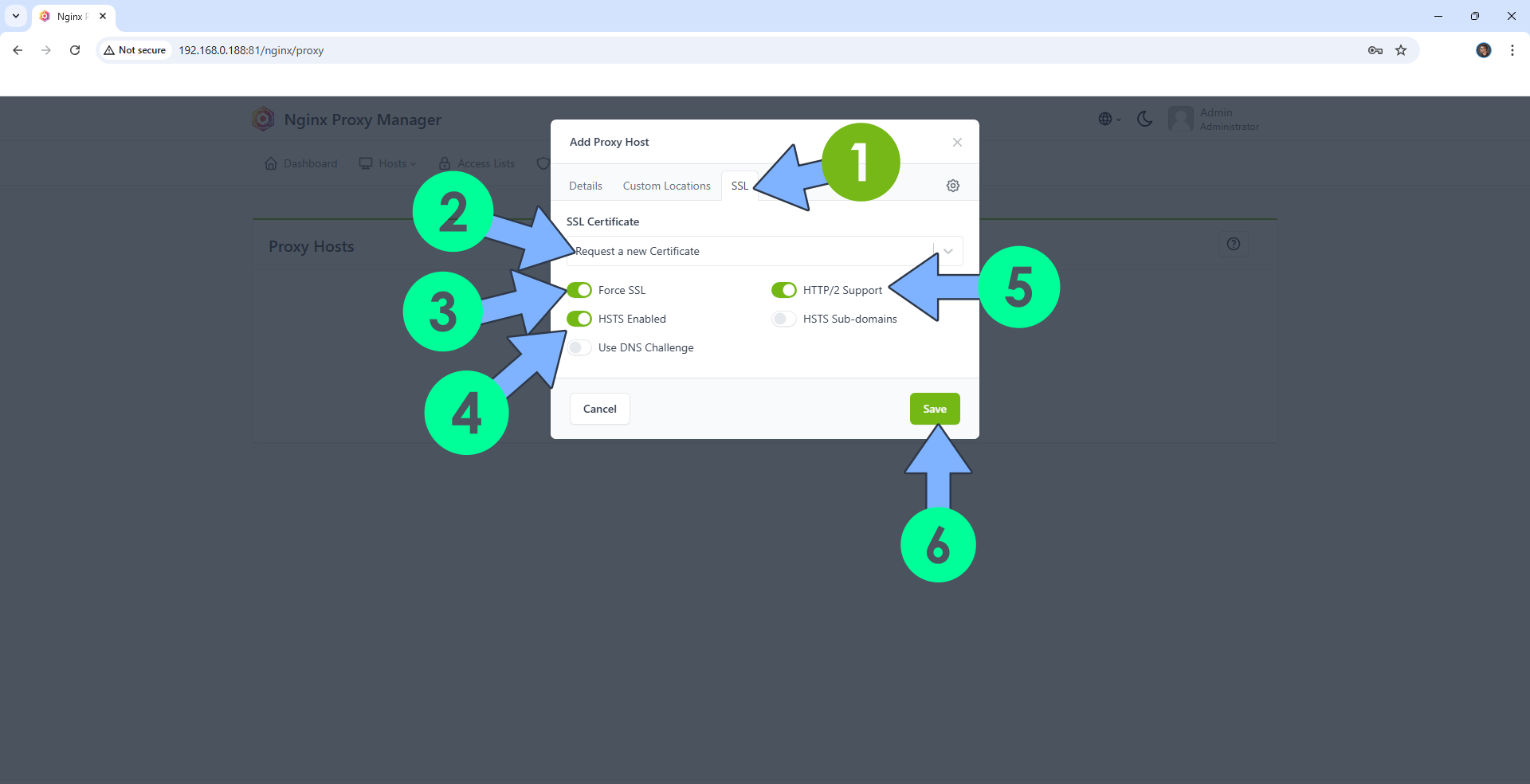
STEP 14
In the Proxy Hosts area, if everything goes right, you will see that your hostname has been generated. Click on it. Follow the instructions in the image below.
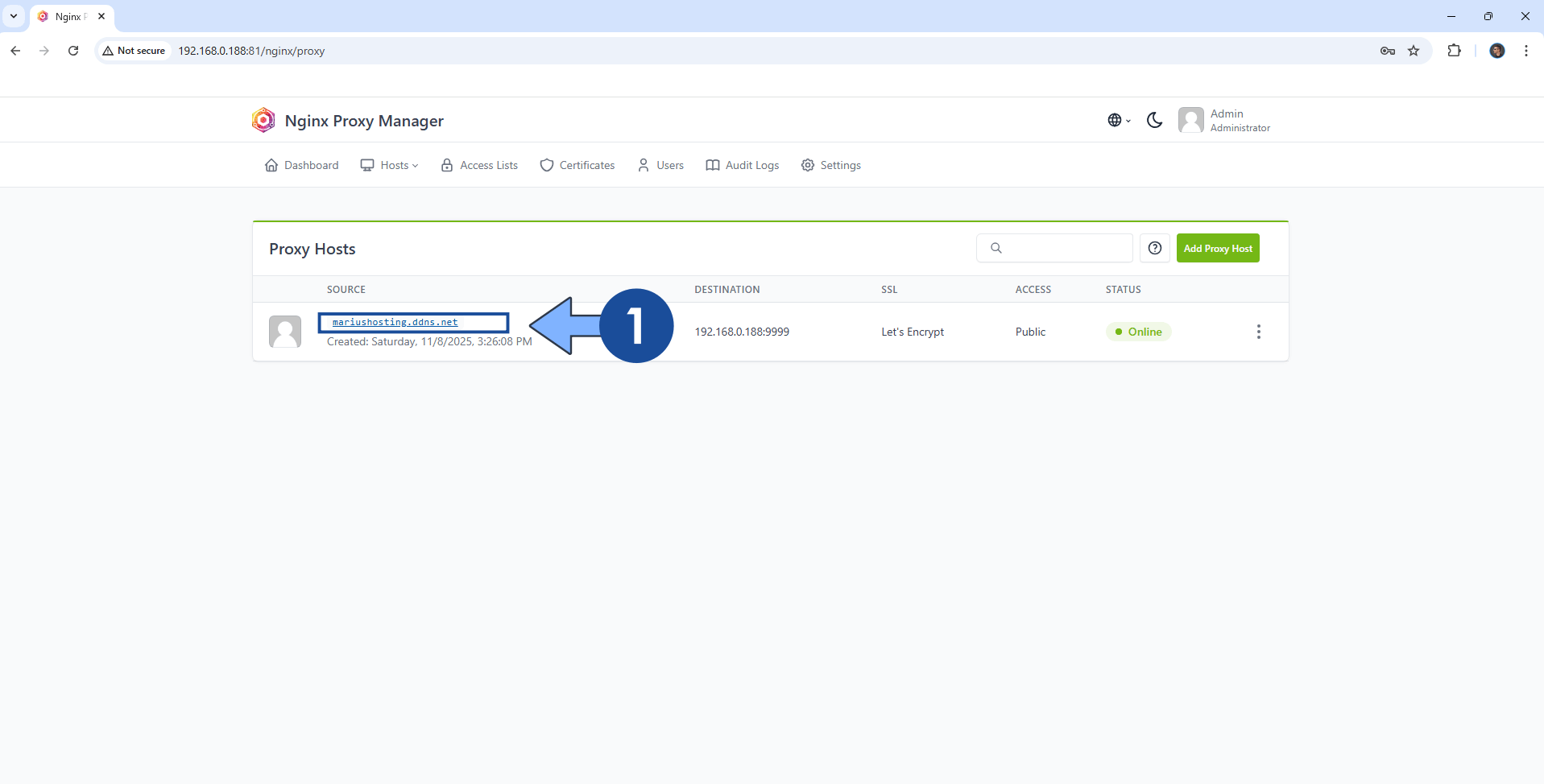
STEP 15
With this free online tool, you can check if your ports 80 and 443 are 🟩opened and not 🟥closed. If they are closed, you should check your port forwarding settings at STEP 8 again until they are marked as opened.
STEP 16
You can now access your UGREEN NAS via HTTPS SSL Certificate from anywhere.
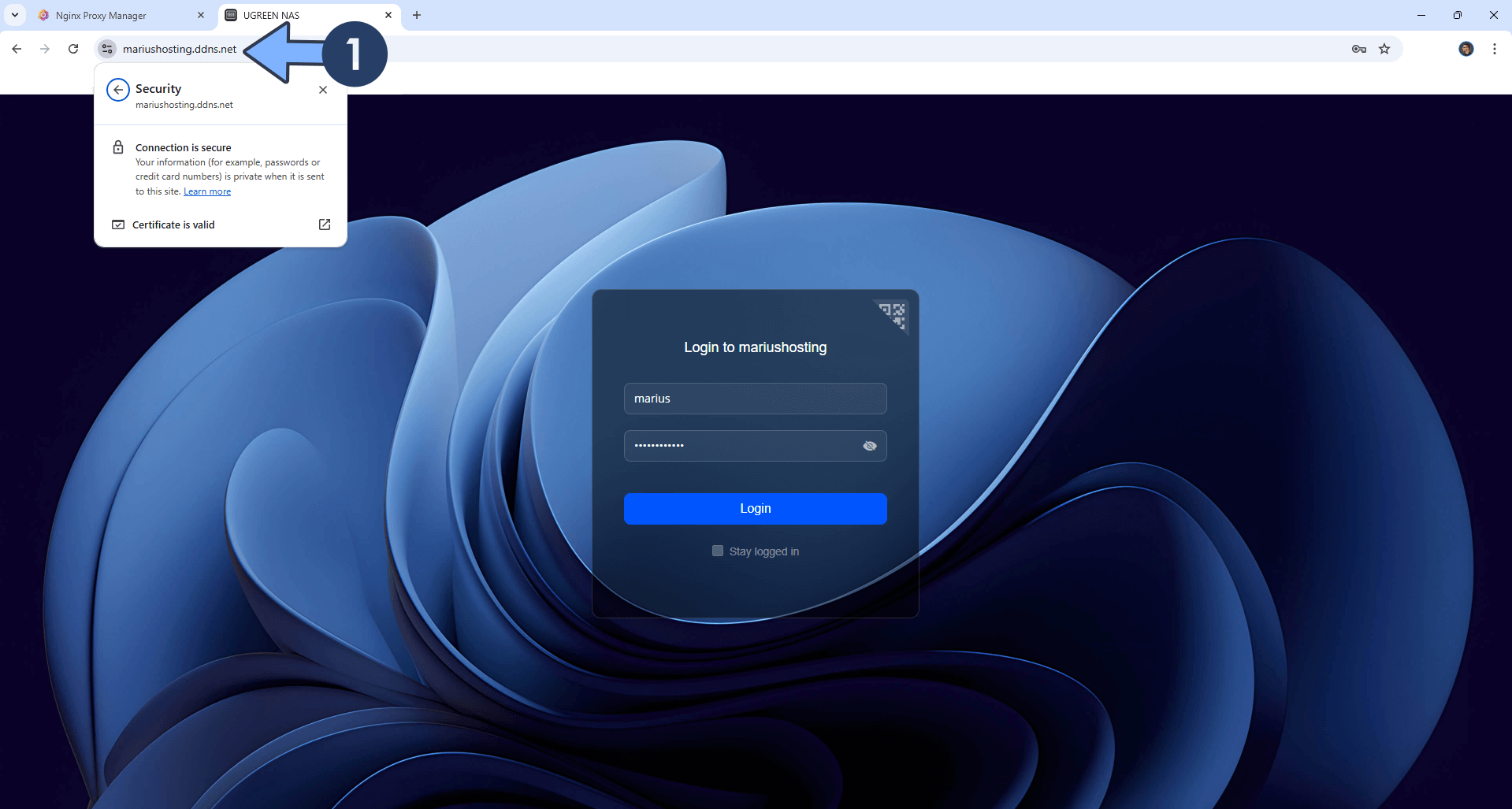
STEP 17
Please Support My work by Making a Donation. Almost 99,9% of the people that install something using my guides forget to support my work, or just ignore STEP 1. I’ve been very honest about this aspect of my work since the beginning: I don’t run any ADS, I don’t require subscriptions, paid or otherwise, I don’t collect IPs, emails, and I don’t have any referral links from Amazon or other merchants. I also don’t have any POP-UPs or COOKIES. I have repeatedly been told over the years how much I have contributed to the community. It’s something I love doing and have been honest about my passion since the beginning. But I also Need The Community to Support me Back to be able to continue doing this work.
STEP 18
Now, I will show you how to add a new hostname to a specific Docker container. I will use StirlingPDF as an example.
Install StirlingPDF using my step by step guide. If you already have StirlingPDF installed on your UGREEN NAS, skip this STEP. ⚠️Attention: Mandatory STEP.
STEP 19
Create a new hostname on the noip website using your noip account. For example, I have created stirlingpdf5 as Host and I use the free ddns.net domain. In the IP Address area, type in your own IPV4 IP address from your ISP, then click Create. Follow the instructions in the image below.

STEP 20
Open your Nginx Proxy Manager container that you have previously installed at STEP 9. Click Add Proxy Host. A new pop up window will open. Add the following details:
Domain Names: Type in your own noip domain name that you have previously created at STEP 19.
Scheme: http
Forward Hostname/IP: Type in the local NAS IP of your UGREEN NAS.
Forward Port: Type in the StirlingPDF local Port that is 7890 (if you have correctly followed my StirlingPDF article to the letter).
Check Block Common Exploits
Check Websockets Support
Click the SSL tab. Follow the instructions in the image below.
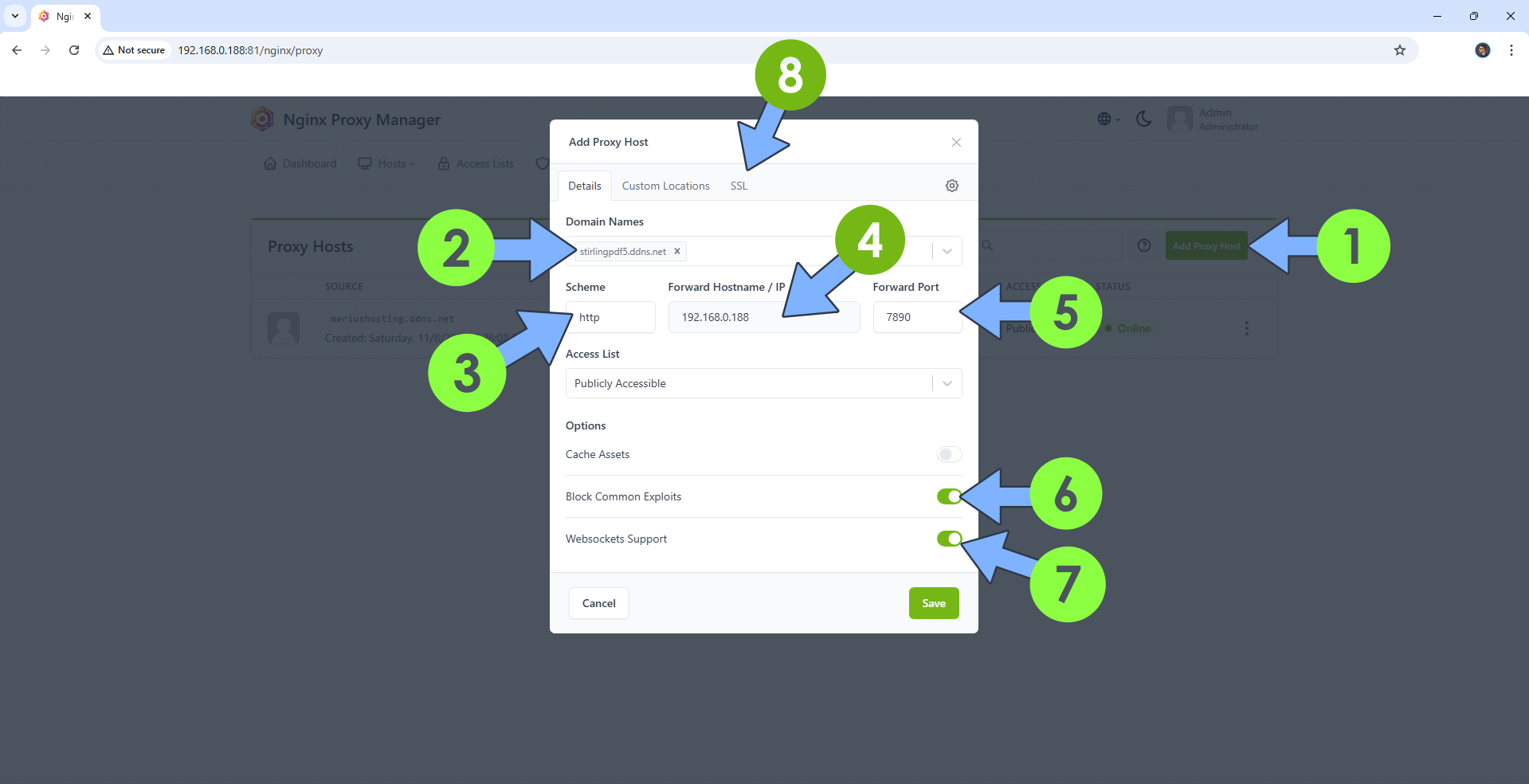
STEP 21
After you click the SSL tab, add the following details:
SSL Certificate: Request a new SSL Certificate
Check: Force SSL
Check: HSTS Enabled
Check: HTTP/2 Support
Click Save. Follow the instructions in the image below.
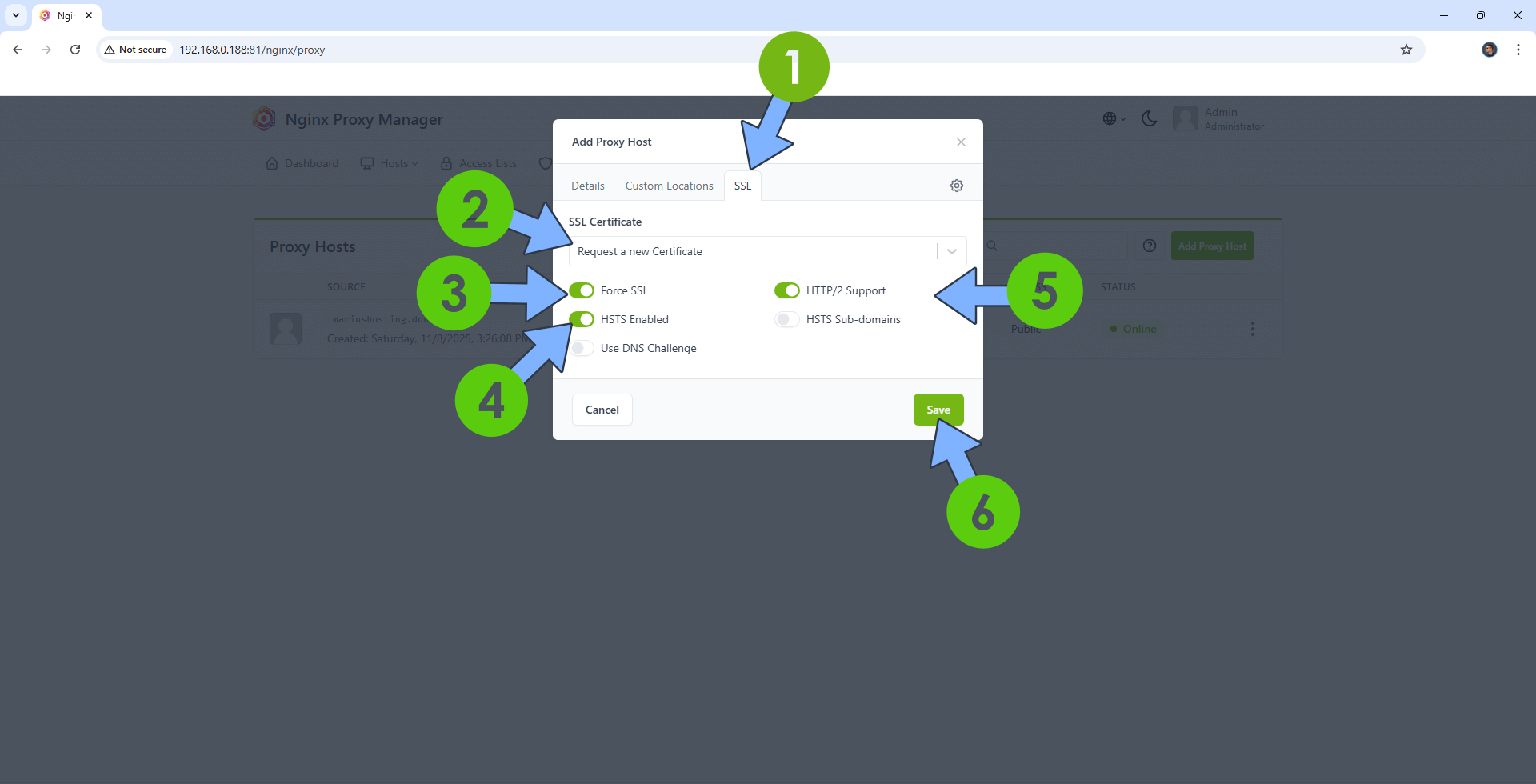
STEP 22
In the Proxy Hosts area, if everything goes right, you will see that your hostname has been generated. Click on it. Follow the instructions in the image below.
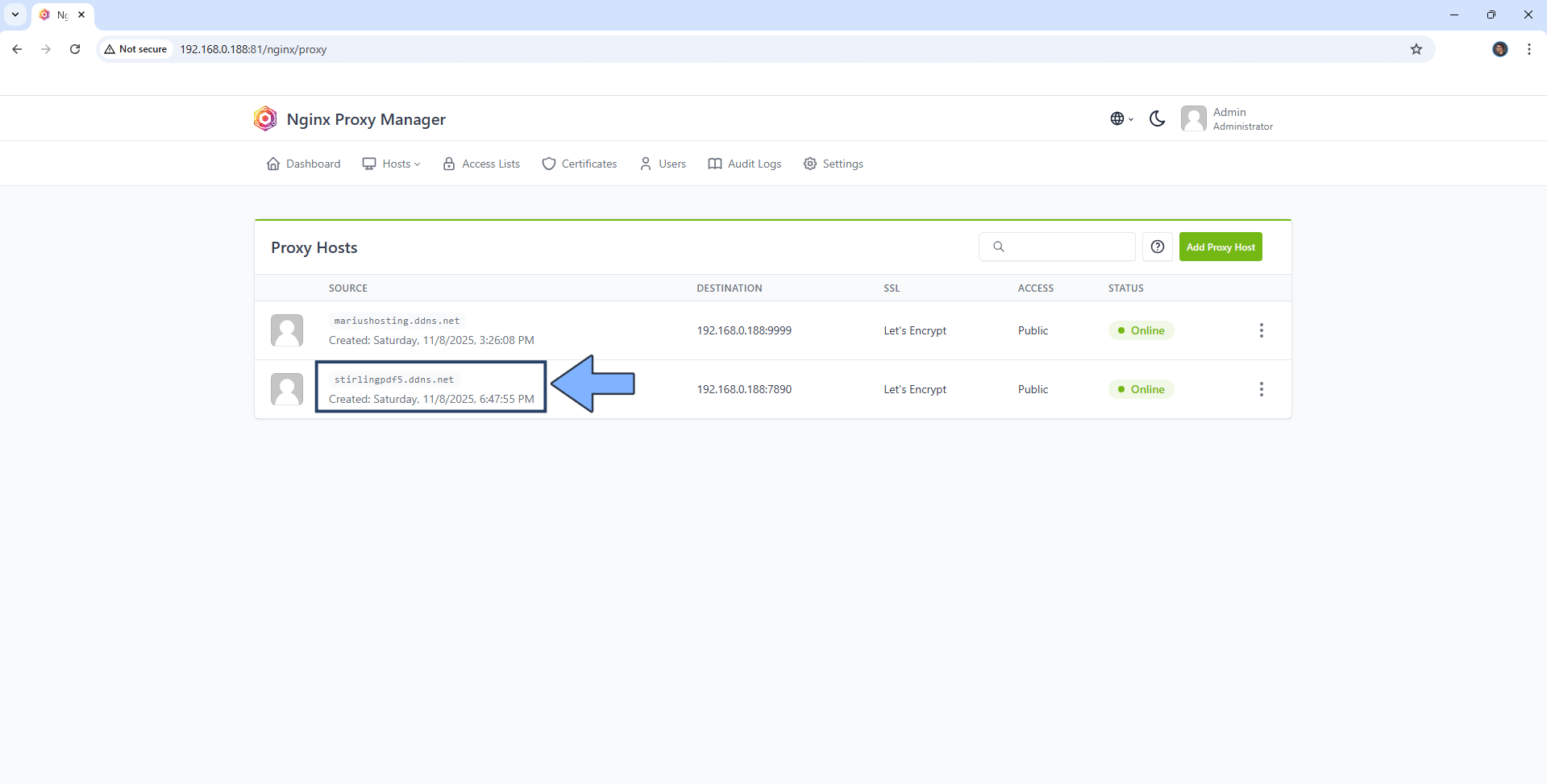
STEP 23
You can now access your StirlingPDF Docker container via HTTPS SSL Certificate from anywhere.
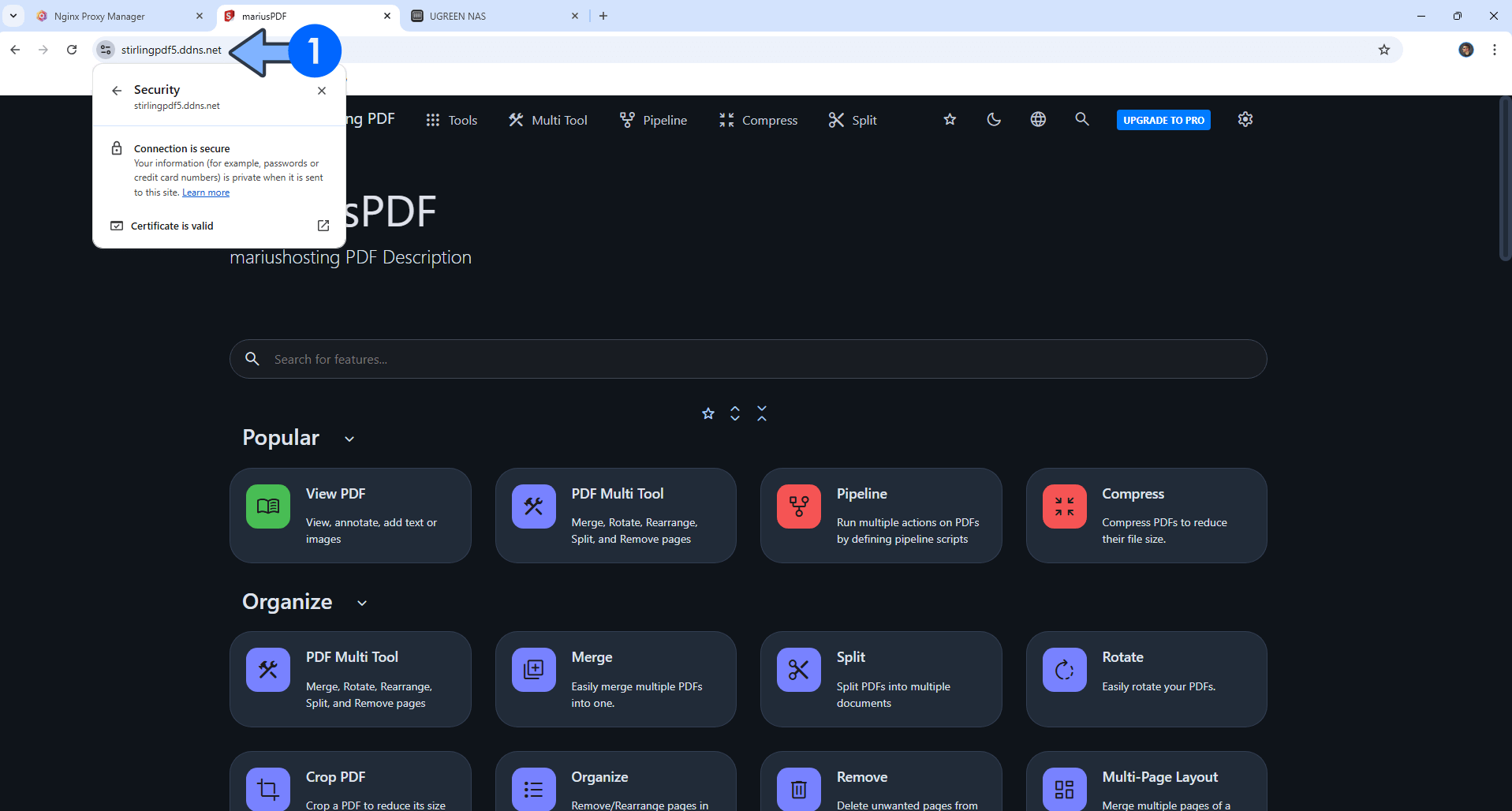
📋Note: In the guide above, I have used the free NoIP DDNS service that allows you to use a maximum of 3 free hostnames for your needs. For extra hostnames, you need to pay for the service. In any case, the best solution for you is to buy your own domain name and use infinite subdomains for your Docker containers.
📋Note: A guide to install Tailscale on your UGREEN NAS will be available soon on mariushosting.
This post was updated on Saturday / November 8th, 2025 at 7:38 PM
